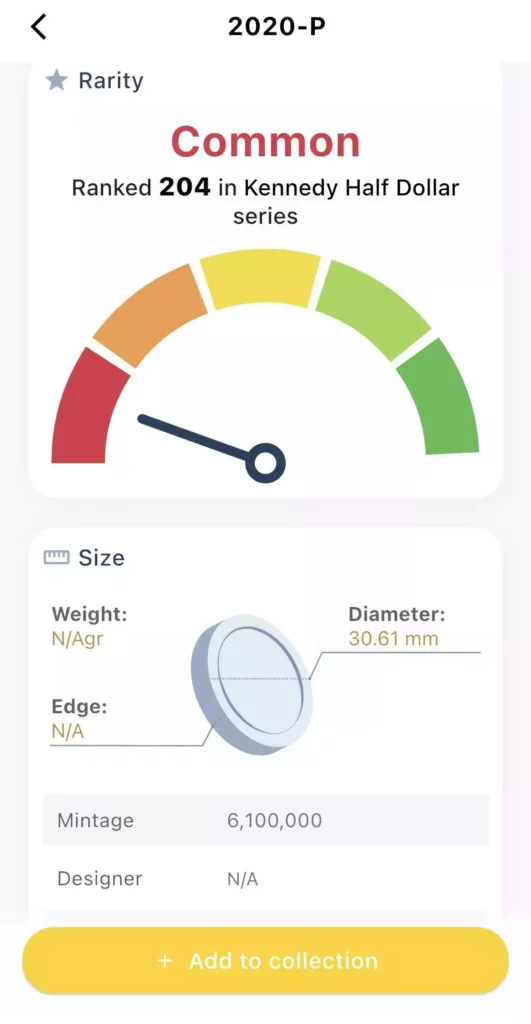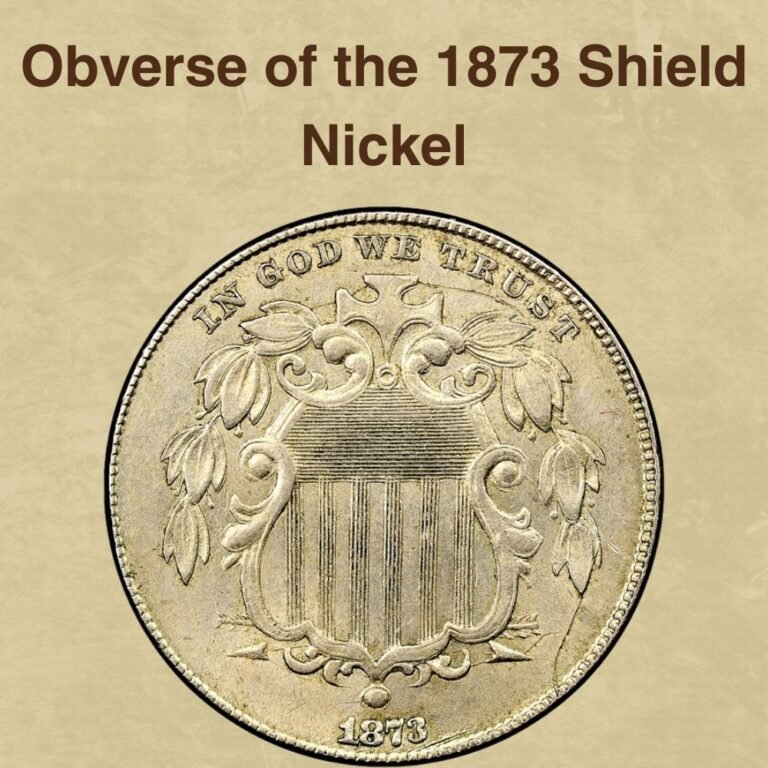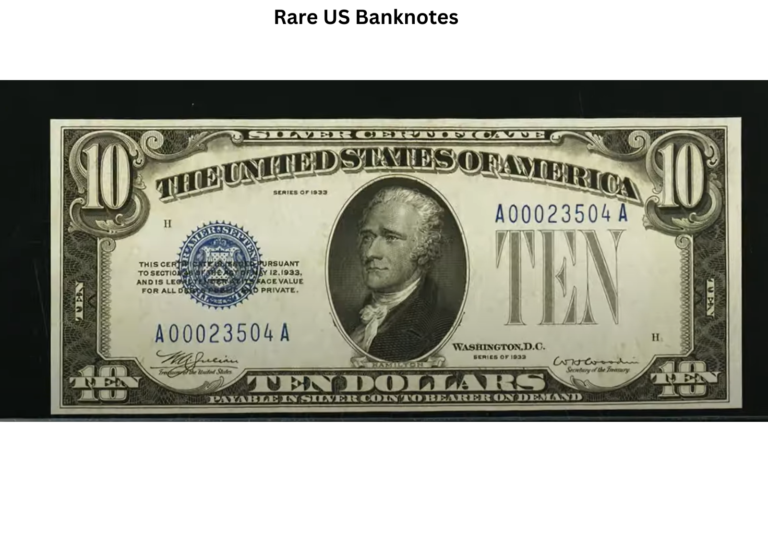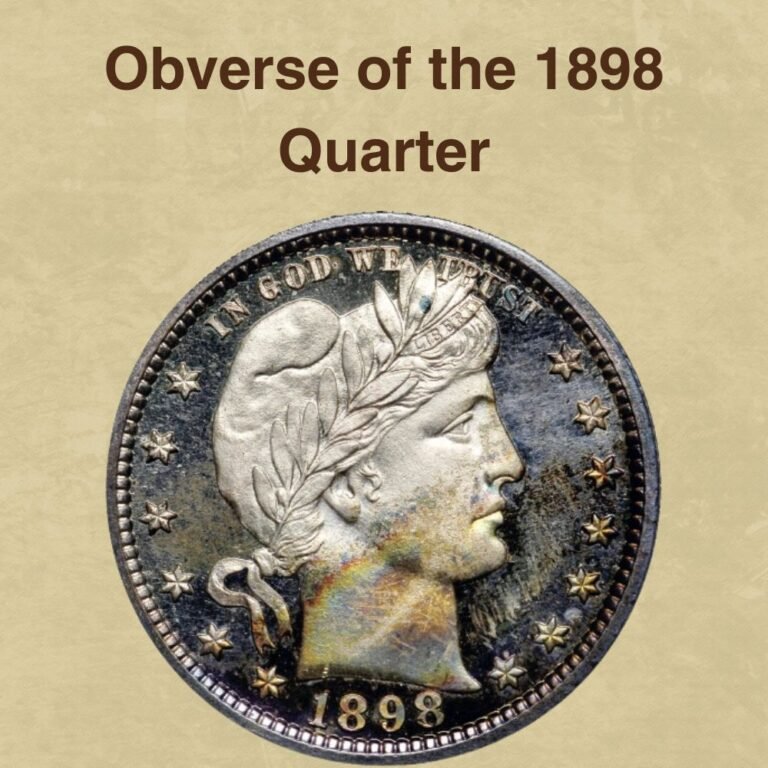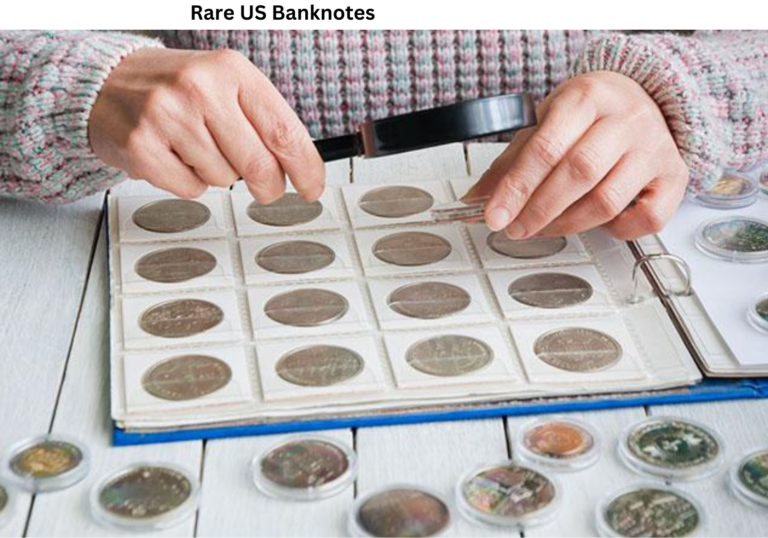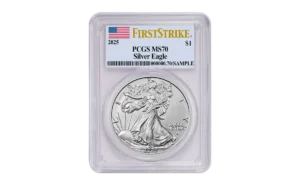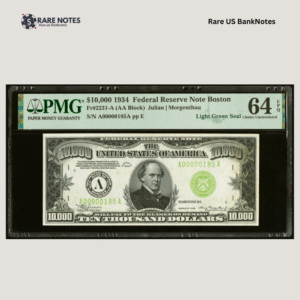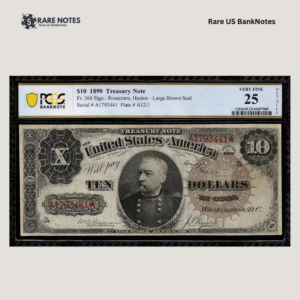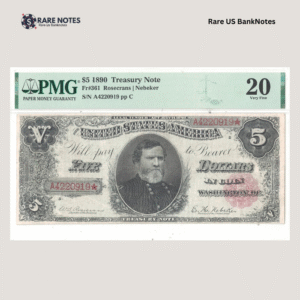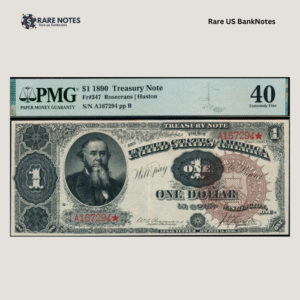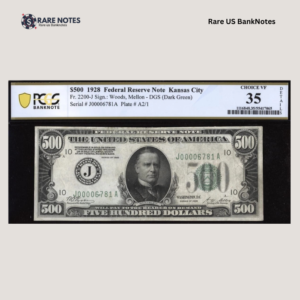American dollar coins represent more than face value when minting errors transform them into numismatic rarities. Spanning from 1794 to present, each susceptible to specific error categories value based on production methods of their era.
Market values reflect both rarity and visual impact. Minor die cracks may add modest premiums of $20 to $50, while dramatic mule errors like the 2000-P Sacagawea/Quarter pairing command $192,000 at auction.
Understanding error formation, identifying diagnostic features, and recognizing market demand separates casual finds from significant discoveries. This comprehensive analysis examines mainly seventeen error types in dollar series, some current market valuations.
Dollar Coin Errors List
1. Doubled Die Obverse (DDO) Errors
Doubled Die Obverse errors form when misalignment occurs during the hubbing process on the coin’s obverse side. The working hub strikes the die multiple times with slight positional shifts between impressions, creating characteristic doubled images that appear as distinct, raised features on the finished coin.
In silver dollars, DDO manifestations typically appear in specific obverse elements. The most common locations include doubling in the date, “LIBERTY,” The doubling shows a complete design hubbed over an incomplete design, with clear misalignment between the two images creating the distinctive doubled appearance that collectors seek.
Notable examples include the 1934-D Peace Dollar DDO, where doubling is dramatically visible on Liberty’s facial features and crown details, the inscription “in god we trust” has obvious double shadows, especially the letters “W” and “E”. The 1934-D DDO realizes $125 and up in circulated grades, with uncirculated specimens reaching $937 or more.
Values vary dramatically based on the prominence of doubling, year, and coin grade. Premium examples with strong, easily visible doubling command thousands of dollars, while minor DDO varieties from other years typically garner modest to moderate premiums among variety collectors and VAM specialists.
2. Doubled Die Reverse (DDR) Errors
Doubled Die Reverse errors occur during the die manufacturing process when the design is impressed multiple times onto the working die with slight misalignment, creating visible doubling on inscriptions, design elements, or other features.
The 1901 Morgan Dollar Doubled Die Reverse stands as a prominent example, displaying dramatic hub doubling in the eagle’s tail feathers on the reverse. This popular but rare variety is extremely scarce, with virtually all known specimens in circulated condition and only a tiny handful of uncirculated examples that command enormous prices. Market values reflect this rarity, with average circulated specimens worth approximately $389, while uncirculated examples in Mint State condition can reach $14,739 or more.
DDR errors typically command lower premiums than DDO varieties because reverse changes are less immediately noticeable. Market values for DDR errors vary widely based on prominence and denomination, ranging from modest premiums of $15-40 for average circulated minor varieties to several hundred dollars for mid-grade specimens, with dramatic examples commanding thousands.
3. Repunched Mintmark (RPM) Errors
Repunched mintmark errors occur when a mint engraver strikes the mintmark punch into a working die more than once in slightly different positions, creating a doubled or tripled appearance of the same letter.
The mintmarks were added by hand using a letter punch struck into the die with a mallet. If the worker felt the punch needed more than one strike and the punch wasn’t in the exact same position as the first, a second image was created—an RPM.
The 1884-O/O Morgan Dollar represents a prominent RPM variety where the remains of a second “O” mintmark appear both inside and to the lower-left outside the primary mintmark. This Top 100 variety is designated as one of the MEGARED100 in the Mega Red 10th edition, making it highly sought after by VAM collectors. High-grade examples are exceptionally rare.
The ready availability of uncirculated Morgan dollars allowed close inspection revealing repunched mintmarks among other variations. Values depend on the strength and visibility of the repunching, with dramatic examples commanding significant premiums among variety specialists.
4. Overmintmark (OMM) Errors
Overmintmark errors occur when one mintmark is punched over a different mintmark on a coin die, creating a visible overlap of two distinct mint letters. Unlike Repunched Mintmarks (RPMs) where the same letter appears multiple times, OMMs involve two different mint facilities.
The formation process involves deliberate die modification. When circumstances changed—such as a mint closing or die shortages—Philadelphia would repurpose existing dies by grinding away the original mintmark and punching a new one over it. Remnants of the underlying mintmark often remained visible, creating the distinctive overmintmark variety.
For example, the 1875-S/CC Trade Dollar is the overmintmark in the Trade Dollar series. A San Francisco “S” mintmark was struck over a Carson City “CC” mintmark, with the second letter “C” showing prominently on the right side of the “S”. PCGS ranging from MS15 to MS65, making it the rare of Trade Dollars in Mint State. Values range from $538 in average condition to $6,351-$19,107 or more in uncirculated grades.
OMMs are significantly rarer uaually than RPMs due to their specific formation requirements involving two different mints and deliberate die modification, making them highly sought after by advanced variety collectors.
5. Repunched Date (RPD) Errors
Before mechanization transformed coin production, dates on working dies were placed by hand using steel punches and a hammer when the die was annealed to a soft state.
A repunched date was caused by the date punch being hit more than once with a mallet. When initial impressions appeared too weak or misaligned, mint workers would strike again, creating doubled or tripled numerals that serve as collectible markers of hand-crafted production.”
The severity and visibility of RPDs vary dramatically. Some repunched dates are subtle, others are very extreme. Direction matters—repunching could occur north, south, east, or west relative to the primary digit, with each direction creating distinct diagnostic features that specialists use for identification.
The 1869 RPD varieties in the dollar series provide comparison context. The 1869 repunched date is a popular variety showing minor doubling on the eight. According to PCGS these are tough to locate in all grades with Mint State pieces being scarce and gems being rare.
RPD varieties appeal to collectors because they represent the final era of hand-punched dates before mechanization eliminated such errors.
6. Misplaced Date (MPD) Errors
When die engravers hand-punched date digits into working dies, precision was critical—but mistakes happened. Misplaced date errors occur when one or more date digits are punched in the wrong location before being corrected, leaving ghost impressions of numbers far from their intended position. These errant digits typically appear below the primary date, often extending into the denticles or field areas.
MPD varieties have grown in popularity since the early 1990s when reports emerged of date portions appearing in locations so far from the expected position that simple human error seemed implausible.
The 1882-CC Morgan Dollar displays a prominent misplaced date where the top of a “1” digit appears below the “8” in the date. This Hit List variety shows the misplaced digit boldly defined on early die state examples, though later strikes show only a mushy dot below the first 8 as the die deteriorated. The auction record stands at $1,695 for an MS66 example, demonstrating strong collector interest in well-preserved specimens with clear misplaced digits.
Collectors should be aware that coins from lengthy production runs often lack the definition seen on earlier strikes—the misplaced digits may no longer be visible beyond faint impressions. Early examples with boldly defined misplaced dates command significant premiums as varieties become better known, while late-stage examples without visible MPD features should command no premium.
7. Overdate Errors
Early American dollar production created one of numismatics’ most fascinating varieties when the U.S. Mint reused existing dies to save costs. Workers would punch a new date numeral over the previous year’s digit on working dies, but when done imperfectly, traces of the underlying number remained visible beneath the corrected date.
Unlike repunched dates showing the same digit multiple times, overdates display two different numerals occupying the same space. The original digit typically appears as ghostly remnants or curves that don’t match the final number.
The 1799/8 Draped Bust Dollar exemplifies this error type. The top loop of the 8 protrudes from the upper loop of the final 9, bringing a different premium depending on grade. According to PCGS Population statistics totaling about 300 certified examples. The auction record stands at $168,000 for a PCGS MS65 example.
The 1799 dollar was heavily counterfeited both historically and in modern times, making authentication critical. Collectors should verify overdates through professional certification, as genuine examples command substantial premiums while counterfeits remain worthless. Values depend on grade and die variety, with the combination of historical significance and scarcity making dollar overdates enduring favorites among early American coinage specialists.
8. Clashed Die Errors
When production lines stall at the US Mint, coin dies occasionally strike each other without a planchet between them. This mechanical mishap creates one of the most visually distinctive dollar errors—the clashed die.
The collision transfers mirror images between opposing dies, leaving distinctive hallmarks on subsequently struck coins. On Morgan dollars, these clash marks appear most prominently at Liberty’s neck, where the eagle’s wing tip creates a raised line, and on the reverse, where her profile transfers onto the eagle’s wing.
The 1882-CC series produced notable clashed die specimens, with designated on the Hit List for its pronounced clash characteristics.
More sought-after examples include the 1886-O “Clashed E,” where the letter E from UNITED appears distinctly below the eagle’s tail feathers. This Top 100 variety reached $4,800 at auction in MS66+ condition.
The 1888-O 1A shares this “Clashed E” designation, with PCGS certifying only one specimens at MS65+, making it both scarce and collectible. Market values for clashed die errors vary significantly based on visibility and coin rarity. Common business strikes command premiums when clash marks are readily apparent, while proof coins and rare issues can reach thousands.
9. Die Rust Errors
Die rust errors occur when dies are improperly stored in humid conditions, allowing oxidation to form on the die surface before striking begins.
This phenomenon was particularly common with southern mint production where coining runs were spread out over the calendar year and storage was slipshod in an uncontrolled humid climate. When rusty dies strike planchets, the oxidation transfers as raised dimples, pits, or textured surfaces on the finished coins, creating distinctive characteristics that differ markedly from post-mint corrosion.
The 1879-CC Morgan Dollar “Capped Die” exemplifies die rust within the dollar series, though its name misleadingly suggests a capped die striking error. Die deterioration began when small mintmark punches exposed weak spots in the reverse die, leaving pitting around the CC mintmark area.
When the mintmark appeared illegible due to rust accumulation, larger punches were applied to improve visibility, though rust obscured most details of the underlying small CC. The result created a Large CC/Small CC overmintmark variety with distinctive textured surfaces appearing as raised dimples around both letters, giving a “capped” appearance.
Recent auction results demonstrate sustained collector interest, with an MS-65 example reaching $63,250 in 2010. Average circulated specimens trade around $482, while uncirculated Mint State grades range from $6,354 to $51,567 or more depending on condition and eye appeal.
10. Off Center Errors
Off-center errors occur when a planchet fails to align properly with the dies during striking. Under normal circumstances, a metal collar holds the planchet in perfect position, but when this alignment fails, the design strikes partially off the coin’s surface. The severity of misalignment determines both visual impact and value, with strikes showing 20% or more displacement commanding the highest premiums.
The most desirable off-center dollars retain full dates and mintmarks despite their misalignment, allowing for definitive attribution while displaying the error’s dramatic nature. Errors are classified by percentage—minor strikes show 5-10% displacement, while major errors exceed 20% off-center.
The 1795 Off-Center Bust represents one of the earliest examples in American dollar coinage. The engraver punched Liberty’s bust too far left into the die, but production continued due to the high cost of die steel. This variety is at least twice as rare as the Centered Bust.
Modern dollar series have also produced notable off-center specimens. Ike dollars also exhibit off-center strikes, particularly. Presidential and Sacagawea dollars have produced off-center examples, though these generally command more modest premiums compared to earlier series. Authentication through professional certification remains essential due to significant premiums these errors command.
11. Rotated Die Errors
Rotated dies errors occur when the obverse and reverse dies are not properly aligned during the striking process, resulting in one side of the coin being rotated at an incorrect angle relative to the other. U.S. coins are struck with coin alignment, meaning when held horizontally and rotated, the reverse should appear properly oriented rather than upside down. When this alignment fails, the error becomes immediately visible.
NGC recognizes rotated die errors only when there is at least 15 degrees of rotation from the proper orientation usually. The greater the degree of rotation, the more dramatic and valuable the error becomes. These errors tend to occur when a die is installed improperly or becomes loose and rotates on its own during production.
The 1846-O Liberty Seated Dollar represents a notable early example of this error type. This historic New Orleans Mint issue was the first mintmarked silver dollar in United States coinage history. The rotated dies variety shows the reverse design askew relative to the obverse, making it particularly distinctive among Liberty Seated dollars. Most examples were heavily circulated and lost to commercial use, making surviving specimens especially scarce.
The degree of rotation, coin grade, and rarity of the date all impact value, making authenticated examples highly sought after by error specialists and variety collectors.
12. Wrong Planchet Errors
Planchet errors occur during the early minting stages when metal blanks develop defects before striking, arising from improperly mixed alloys, incorrect strip thickness, or incomplete punching from metal ribbons.
The most common manifestation involves clipped planchets, created when blanking presses improperly feed metal strips or overlap previously punched holes, producing curved, straight, or ragged clips visible as missing metal sections along coin edges. Wrong planchet errors represent another significant category, typically occurring when residual planchets trapped in transportation hoppers dislodge and enter presses configured for different denominations.
Market values reflect dramatic variation based on error type and severity. Modern examples include the 2000-P Sacagawea dollar struck on Susan B. Anthony planchets—a wrong planchet error, with prices ranging from $8,000 to $16,800.
Basic clipped planchets trade for modest premiums, while wrong planchet errors consistently achieve hundreds to thousands of dollars depending on visual impact and professional certification.
13. Die Break/Crack Errors
Die break/crack errors occur when coin dies fracture under the immense striking pressure of the minting process. As dies strike thousands of coins, they develop stress fractures that eventually cause pieces of the die to crack or break away entirely. When metal from the planchet flows into these voids during striking, it creates raised, featureless areas on the finished coin’s surface.
These errors reveal the lifecycle of die deterioration—from initial hairline cracks to progressive weakening, and finally catastrophic failure.
The 1900-O Morgan dollar exemplifies progressive die cracking, particularly. These coins display die cracks running through the reverse inscription “STATES,” with advanced die states showing additional cracks through the eagle’s wing that branch into the motto “IN GOD WE TRUST.” Collectors especially prize examples demonstrating the full progression from early weak cracks to prominent late-stage breaks. Morgan and Peace dollars featuring these errors typically range from $50 to several thousand dollars.
Market values for dollar coins with die breaks vary considerably based on the error’s size, location, and visual impact. In circulated grades, minor die cracks add $10 to $50 over base value, while prominent cuds can command $75 to $200. AU specimens with dramatic breaks trade between $150 and $500, with exceptional examples exceeding $1,000.
14. Broadstrike Errors
Broadstrike errors in dollar coins represent a dramatic category of striking mistakes that occur during the minting process. These errors are produced when the collar die, which is the circular device surrounding the lower die, malfunctions during striking.
The collar normally prevents the metal of the blank from flowing outside the confines of the die, but when it fails to deploy properly, all denominations of U.S. coins with a broadstrike develop plain edges. This allows the flowing metal to escape outside the die, resulting in coins with plain rather than reeded edges. The coin expands beyond its normal diameter, becoming noticeably wider and flatter than standard specimens. The entire design remains complete on both faces, but the coin lacks the characteristic reeded edge and possesses an abnormally large diameter.
Within the dollar series, a 1922-S Peace Dollar broadstruck out of collar graded AU-55 by PCGS demonstrates exemplifies this error type, as the coin appears much larger than a regular issue dollar due to significant expansion beyond normal dimensions.
Depending on the denomination and the coin’s condition, broadstrike error coins can be worth anywhere from five dollars to one thousand dollars and beyond.
15. Die Cud Errors
A cud appears as a raised, blob-like area at the coin’s edge, occurring when a die cracks and a piece actually breaks away from the rim after enduring immense pressure during the minting process.
When the broken piece falls away, coins struck afterward display a raised, rounded, unstruck area along the edge where the die material is missing. This creates a distinctive raised mass of metal that lacks any design detail, appearing as a blank, featureless blob protruding from the rim.
Unlike simple die cracks that produce thin raised lines, cuds involve actual loss of die material, making them significantly more valuable to collectors. The value of a die cud varies depending on location, size, and overall appearance of the error, making it difficult to give exact values, but most are worth about one hundred dollars or more.
In the Morgan and Peace dollar series, many specimens classified on the basis of cud can range in value from fifty dollars to several thousand dollars. Morgan dollars with prominent cud errors at significant design locations command premium prices, particularly when the cud is large and visually impressive, with higher-graded uncirculated examples reaching the upper end of this value spectrum.
16. Edge Lettering Errors
Edge lettering errors emerged with the 2007 Presidential Dollar series when the U.S. Mint introduced incused edge inscriptions containing the date, mintmark, and “E PLURIBUS UNUM.” Edge lettering began on Native American dollars in 2009. These inscriptions are applied using a Schuler edge lettering machine in a separate operation after striking, creating opportunities for errors.
For the first four Presidential dollars, coins were transported in bins to edge-inscribing equipment not part of the integrated production line. This process created three distinct error types, classified by severity.
Weak edge lettering shows thinly struck or incompletely formed letters, with one or more characters displaying significant weakness but remaining partially visible. This represents the mildest form of edge error. Weak edge lettering errors can be worth from $20 upward depending on condition and rarity.
Partial edge lettering features one or more letters completely missing while other portions of the inscription remain visible, representing a moderate error severity. These errors result from inconsistent pressure during the edge lettering process.
Missing edge lettering displays completely blank edges where all inscriptions should appear, representing the most dramatic error type. Hundreds of thousands of 2007-P Washington dollars were released without edge inscriptions. A 2009 Native American dollar with missing edge lettering sold for just under $10,000, demonstrating strong collector demand for complete missing edge varieties.
17. Mule Errors
Mule errors in Dollar series represent the rarest type of mint error, occurring when two dies not intended for use together are accidentally paired during the striking process.
These mistakes happen at the mint when an employee incorrectly combines dies from different coin series, such as pairing a dollar obverse with a quarter reverse. The resulting coin displays an impossible combination that should never exist in regular production.
The most famous example is the 2000-P Sacagawea Dollar mule featuring a Washington Quarter obverse paired with a Sacagawea reverse. The coin’s unique status as a double-denomination error gives it a theoretical face value of $1.25, combining the quarter’s 25 cents with the dollar’s value. With approximately 20 known specimens. In 2018, a PCGS MS-67 example sold for $192,000 at Stack’s Bowers, setting a new auction record.
This particular mule typically commands prices between $100,000 and $125,000, though top-graded MS67 examples reach $200,000 to $235,000. MS-66 specimens, tied for finest graded, are valued around $125,000. Even lower uncirculated grades maintain exceptional value due to extreme rarity.
In Conclusion
The dollar error market demonstrates consistent collector demand across all series and error types. While dramatic mule errors and wrong planchet strikes command premium prices, accessible varieties like die cracks and repunched mintmarks offer entry points for developing collections.
Authentication and accurate grading remain critical factors in determining value. As production methods continue evolving, historical errors become increasingly finite, making properly certified examples particularly desirable for long-term collecting and investment purposes.
The post 17 Rare Dollar Coin Errors List with Pictures (By Year) appeared first on CoinValueChecker.



